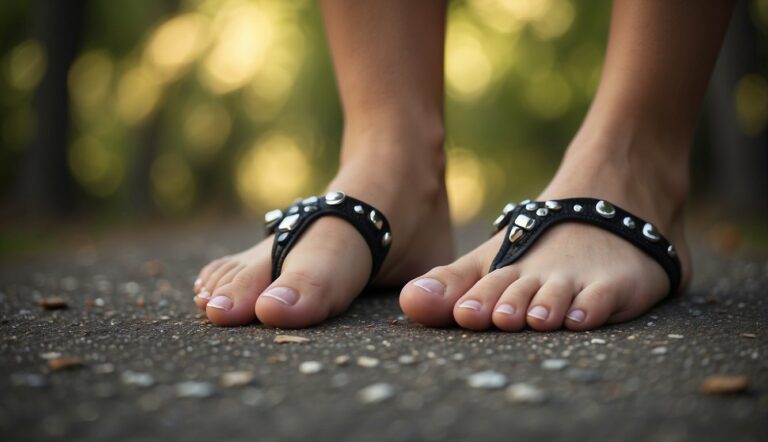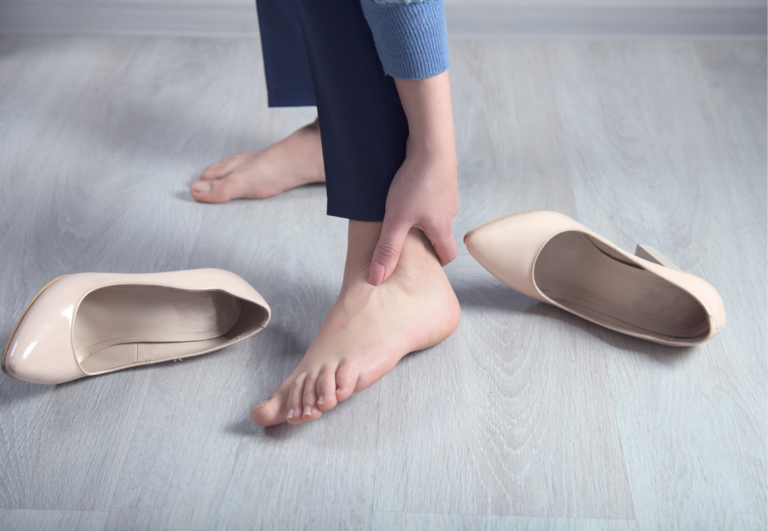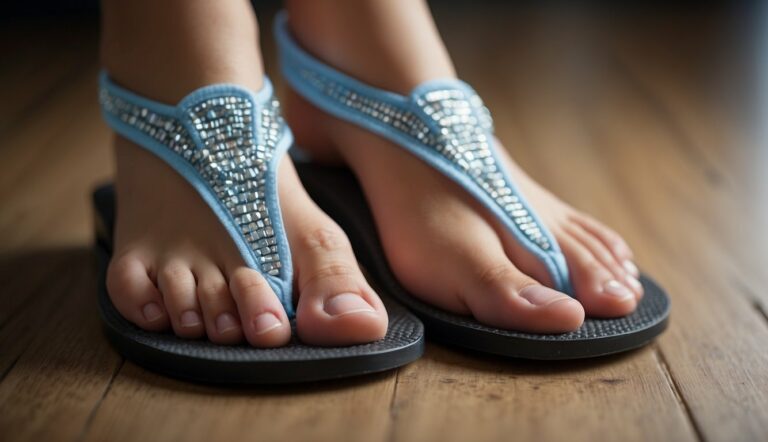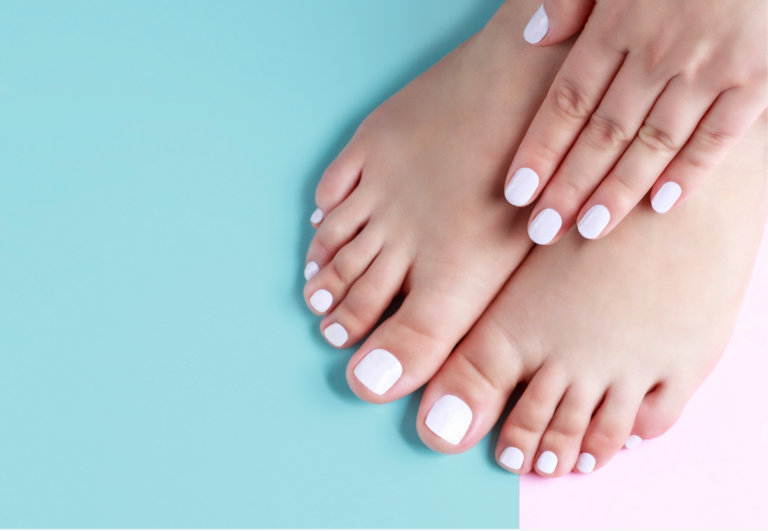What Should I Do If I Experience Pain While Using Toe Spacers? (Causes and Solutions)
Experiencing discomfort while using toe spacers can be disconcerting, especially when you’re using them for pain relief and foot health. As a toe spacer aficionado, I’ve faced similar challenges yet found ways to ensure comfort while reaping the benefits of toe spacers. The key to success is understanding how to use them properly, as incorrect usage can exacerbate pain rather than alleviate it.
If you find yourself in pain while using toe spacers, it’s crucial to assess whether you’re wearing the right size and if they’re positioned correctly between your toes. I can’t stress enough the importance of starting slowly; incorporating toe spacers into your regimen gradually can help prevent discomfort. Additionally, it’s pertinent to consider that while toe spacers can be beneficial for foot health, they might not be suitable for everyone—and consulting with a healthcare professional is always advisable if pain persists.
Remember, toe spacers are designed to relieve pressure and realign your toes to promote better foot health. Therefore, any persistent pain while using them could indicate a need for adjustment. Listening to your body is important, and making small tweaks to your approach can make a significant difference in comfort and effectiveness.
Why Would Toe Spacers Cause Pain?
When it comes to using toe spacers, experiencing pain can be an indication of several issues. It’s important to assess whether the pain is due to incorrect sizing, improper use, or underlying foot conditions.
Incorrect Sizing
Toe spacers come in various sizes, and selecting the right size is crucial for avoiding pressure and discomfort. If they are too small, they can cause blisters and calluses, while too large toe spacers may lead to reduced effectiveness and increased risk of toe misalignment.
- Check fit: Spacers should snugly fit between toes without causing excessive pressure.
- Measurements: Consult size charts or a professional fitter to find the appropriate size for your feet.
Improper Use
How you use toe spacers can affect their comfort and function. Wearing them for too long, especially when you’re not used to them, can result in pain.
- Usage time: Gradually increase the time you wear toe spacers to allow your feet to adapt.
- Activity level: Limit strenuous activity while wearing toe spacers to prevent added stress on your toes.
Underlying Foot Conditions
Existing foot problems, such as plantar fasciitis or toe misalignment, may be exacerbated by toe spacers. Always consider underlying conditions when assessing pain.
- Foot assessment: Be aware of any pre-existing conditions that may interact with the use of toe spacers.
- Consultation recommended: If you suspect your pain is related to a foot condition, seek advice from a healthcare professional.

Correct Usage of Toe Spacers
Toe spacers, when used correctly, can alleviate discomfort and help maintain proper alignment of your toes. Ensuring you position and use them for recommended timeframes is crucial for effectiveness and to avoid additional pain.
Proper Placement
To use toe spacers effectively, make sure they are made of a pliable material like silicone for maximum comfort. I start by gently pushing each toe away from its neighbors, creating space. Then, I carefully insert the toe spacer between each toe, ensuring it sits snugly but without causing undue pressure. This proper placement enhances balance and stability in the foot.
Duration of Use
Initially, I recommend wearing toe spacers for short periods—start with 10-15 minutes and gradually increase the duration as your toes adjust to the stretch. It’s not advisable to exceed 30 minutes during the first few uses. For best results in toe realignment and to reduce pressure on the toes, consistent, incremental use is key.
Complementary Therapies
For a comprehensive approach to foot health, I combine the use of toe spacers with other therapies such as:
- Stretching: Simple toe stretches can improve flexibility and strength.
- Exercises: Foot-specific exercises may enhance overall foot stability and aid in recovery.
- Orthotics: Consult a podiatrist to see if specialized orthotics could support your individual foot shape and condition.
Remember, these devices are not a cure-all; they’re part of a larger strategy aimed at foot comfort and health. If toe spacers cause pain, discontinue use and seek advice from a healthcare professional.
Troubleshooting Common Issues
Experiencing pain while using toe spacers can be a common hurdle. Here’s how to effectively address and resolve any issues you may encounter.
Adjusting to Toe Spacers
When you first start using toe spacers, discomfort is natural as your toes are not used to being held apart. Begin slowly, integrating toe spacers into your routine; perhaps starting with 20 minutes a day and incrementally increasing time as your feet adjust. Ensure the toe spacers are made of medical-grade silicone or gel to reduce the risk of irritation.
Dealing with Discomfort
If discomfort persists, check if the size and fit of the toe spacers are appropriate. Poorly fitting spacers can cause friction and inflammation. To alleviate pain, opt for a gel-based spacer that provides cushioning. It’s important to let your feet rest and recover from any aches and pains before attempting to use the spacers again.
When to Consult a Professional
Pain might signify a more profound issue such as an injury or the need for foot strength enhancement and should not be ignored. If pain continues or is severe, stop using the spacers and seek advice from a foot surgeon or a professional experienced in foot care. They can assess if your foot’s condition requires treatment beyond the scope of toe spacers, such as surgery or specialized therapy to relieve pain.
Maintenance and Care of Toe Spacers
Proper maintenance of toe spacers is crucial to ensure they provide the maximum comfort and retain their hygiene. It’s essential to regularly clean your toe spacers and understand when they need to be replaced to prevent any issues.
Cleaning and Storage
Cleaning: My toe spacers are typically made from silicone gel, which makes them easy to wash. I use mild soap and warm water to clean them, ensuring to remove any dirt or sweat buildup. I carefully rinse them and pat them dry with a lint-free cloth. This routine ensures the toe spacers remain hygienic for everyday use.
Storage: To keep my toe spacers in good condition, I store them in a cool, dry place away from direct sunlight. I make sure they are completely dry before storage to prevent any bacterial growth. For toe spacers like the Mind Bodhi Toe Separators, which I find pretty durable, following these storage guidelines can help maintain their shape and effectiveness.
Lifespan and Replacement
Lifespan: The durability of toe spacers can vary, but generally, high-quality silicone gel toe spacers last me a good amount of time. I keep an eye on the signs of wear and tear, such as thinning or tearing of the silicone.
Replacement: The price of toe spacers can influence how often I’m willing to replace them. However, I prioritize comfort and hygiene over cost. I recommend replacing your toe spacers every few months or immediately if they show any significant signs of degradation, to maintain proper foot care.
Quick Overview of Toe Spacers
Toe spacers can be a simple, yet powerful tool in addressing toe and foot discomfort. They’re designed to realign the toes to their natural position, which may help alleviate pain from bunions, corns, and hammertoes, and improve overall foot health.
Types of Toe Spacers
Toe spacers come in various materials such as silicone, gel, and foam. Silicone toe spacers are durable and can be washed for reuse, which makes them a popular choice. Gel spacers tend to conform well to the foot, providing cushioning and comfort, while foam spacers are softer and may require frequent replacement.
Benefits of Using Toe Spacers
The primary benefits of using toe spacers include:
- Alignment: They help in maintaining the proper alignment of the toes.
- Circulation: Improved toe alignment can enhance blood circulation.
- Pain relief: By separating the toes, they can provide relief from the pressure and hence reduce pain associated with bunions, corns, and hammertoes.
- Support stretches: They can be used to support stretches and exercises that target the intrinsic muscles of the feet.
Common Mistakes
When using toe spacers, avoid these common mistakes:
- Incorrect Size: Using toe spacers that don’t fit can lead to more discomfort instead of relieving it.
- Overuse: Wearing toe spacers for too long initially may cause more pain. Gradually increase usage time.
- Ignoring Pain: If using toe spacers causes pain, it’s important to stop and consult with a specialist.





